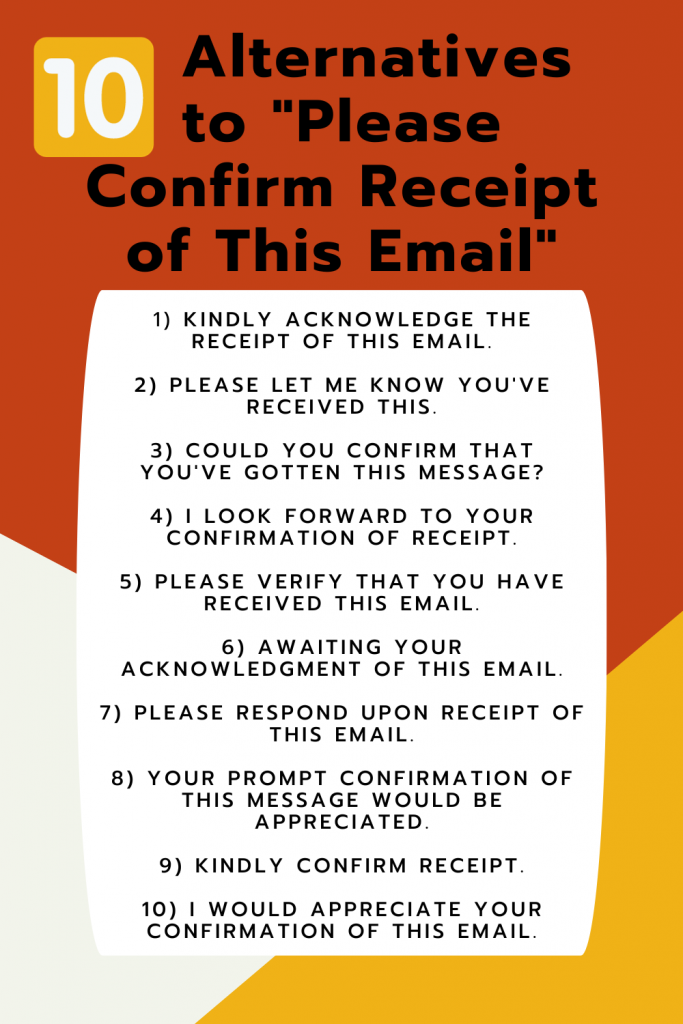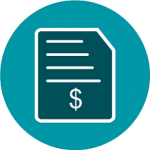Maybe you have wondered many times whether the other party received your email. Мany emails are flying around nowadays you want to be sure your note didn’t get lost right? Especially if it’s about something important. In this post, we’ll answer all your important questions about the “Please Confirm Receipt of This Email” phrase, like when it needs to be sent, what other phrases it can be replaced with, is it suitable for official emails, and much more.
Can I Say “Please Confirm Receipt of This Email”?
Yes, you can say “Please confirm receipt of this email” in your email communication. This phrase is a standard and polite way to request a confirmation from the recipient that they have received and read your email. It is commonly used in formal and professional settings, especially when dealing with important or sensitive information that requires acknowledgment.
Alternatives to “Please Confirm Receipt of This Email”
1. Kindly acknowledge the receipt of this email.
Example: “I would appreciate it if you could kindly acknowledge the receipt of this email to ensure we’re on the same page.”
Usage: When emailing someone important, it’s always good to be extra polite. “Kindly acknowledge receipt of this email” sounds formal – good for higher-ups where you want to show respect.
2. Please let me know you’ve received this.
Example: “Once you’ve reviewed the attached documents, please let me know you’ve received this.”
Usage: “Please let me know you’ve received this” is more casual. It’s like a friendly nudge without getting too stiff and you can use it with regular clients or coworkers.
3. Could you confirm that you’ve gotten this message?
Example: “To avoid any misunderstandings, could you confirm that you’ve gotten this message?”
Usage: If I’m emailing a colleague at work you could say “Could you confirm that you’ve gotten this message?”. No need to be all formal with people you know. But you still want to confirm they saw your message.
4. I look forward to your confirmation of receipt.
Example: “I look forward to your confirmation of receipt, so we can proceed with the next steps.”
Usage: This phrase says – “This email got some stuff that needs your attention, so give it a shout when it shows up in your inbox, alright?”
5. Please verify that you have received this email.
Example: “Due to the importance of the contents, please verify that you have received this email.”
Usage: This expression is appropriate for emails containing important or sensitive information.
6. Awaiting your acknowledgment of this email.
Example: “I am awaiting your acknowledgment of this email before moving forward with the project plan.”
Usage: Best for scenarios where a response is needed before taking further action. Another great way to say speak up when this hits your screen.
7. Please respond upon receipt of this email.
Example: “Please respond upon receipt of this email to confirm the meeting date and time.”
Usage: That’s good if you really need them to write back fast. It’s direct but might sound pushy.
8. Your prompt confirmation of this message would be appreciated.
Example: “Your prompt confirmation of this message would be appreciated to finalize the arrangements.”
Usage: That’s polite but still gets the point across that you want to know they read it. It would work in a professional setting.
9. Kindly confirm receipt.
Example: “For our records, kindly confirm receipt of this invoice email.”
Usage: That’s more casual and relaxed. But it still asks them to confirm receipt.
10. I would appreciate your confirmation of this email.
Example: “I would appreciate your confirmation of this email, ensuring all details are correct.”
Usage: That’s somewhere in between. It’s reasonably polite but still expect a response. It could work in lots of situations.

How to Answer to “Please Confirm Receipt of This Email”?
Responding to a request to confirm the receipt of an email is a straightforward process, typically requiring a brief and courteous reply. Here are some examples of how to effectively answer such requests:
• “I have received your email, thank you.”
• “Email received, thank you for the information.”
• “I’ve received your email and will get back to you by [specific time/date].”
• “Thank you for the email. I will review it and respond by the end of the day.”
• “I have received your email and here’s my response: [your detailed response].”
• “Thank you for your email. Regarding your request, I think that…”
• “I’ve received your email. Could you please provide more details on…”
• “Your email is well received. However, I need some clarification about…”
• “Thank you for your email. I am currently out of the office but will attend to your email as soon as I return.”
• “This is an automated response confirming the receipt of your email. I will get back to you as soon as possible.”
Conclusion
We’re all busy, but when you send some important information you need to know whether the other person has received your email. And here comes the expression “Please confirm receipt of this email”.
Basically, there are lots of phrases that nicely ask people to reply. You just need to match it to how well you know the person and how quickly you need an answer. The words can make it more or less formal too. But the goal is always just getting them to confirm they opened and read the email.
FAQs
1. What does “Please Confirm Receipt of This Email” mean?
• It’s a request for the recipient to acknowledge that they have received and opened the email. It’s often used in formal or business communications to ensure important information has been successfully delivered.
2. Is it necessary to ask for email confirmation?
• It depends on the context. In formal or critical communications where you need to ensure the recipient has received and understood the information, it is advisable. However, for casual or less important emails, it might not be necessary.
3. Should I use email read receipts instead of asking for confirmation?
• Email read receipts can be an alternative, but they are not always reliable as recipients can decline them. A direct request for confirmation is often more effective.
4. What should I do if I don’t receive a confirmation?
• If confirmation is critical and you haven’t received a response, a polite follow-up email or phone call may be appropriate to ensure the message was received.
5. Is it appropriate to use this phrase in all types of emails?
• This phrase is more suited to formal or important emails. For casual or personal emails, it’s often unnecessary and might seem overly formal.
6. How soon should I expect a confirmation after sending an email?
• The expectation can vary depending on the urgency and content of the email. Generally, giving the recipient a day or two to respond is reasonable.









